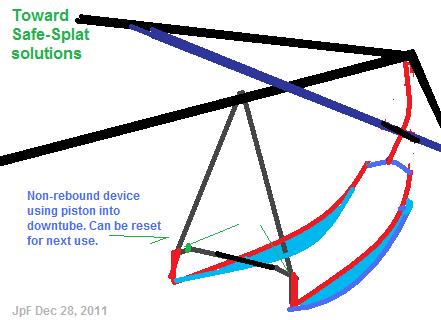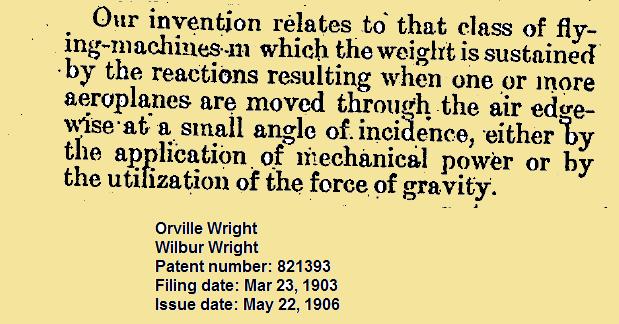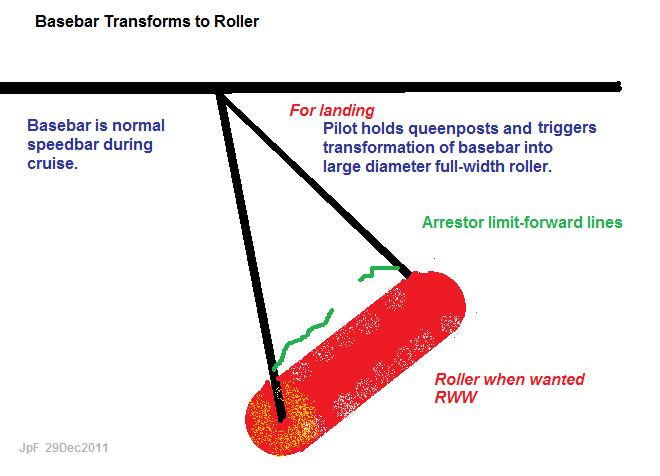http://www.google.com/patents/US3442501
Part of a solution might include non-rebound shock absorbing, as rebound is drastic and is to be avoided. One direction of solving could use the queenposts as holder of air to be used in the non-rebound shock absorbing. The ski can be below the basebar by substantial amount so that boulder and brush do not snag or catch the basebar during impact action. The rear of the ski could be with a posting that pistons into the queenposts (TCF downtubes). Then also, after som ski impact some wheeling could get exposed or not. The surface of the ski might be moving surface as conveyor belt or teflonized or with ablative material. Choices to explore.
Other non-rebound tactics: bungee with piston cam catched to prevent return or rebound until after landing event; then perhaps release cam for reset for next flight.
On pilot-body arresting: Limit lines from the bottom of the queenposts (downtubes of triangle control frame TCF) would perhaps be an option to the BobK stepped arrestors or in combination with such.
Motivation:
==========================================
Another motivation:

============================
Sketch of a direction:

 Home
Home






